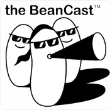I'm exploring HootSuite right now as as replacement for TweetDeck. (For those of you who think I'm suddenly taking up bird watching, these are two different applications for managing your Twitter feeds and searches.) The differences are gratifying and at the same time difficult to manage. But there's one aspect of HootSuite that has poignantly reminded me why we need to stop focusing exclusively on our mentions and start focusing on our audience.
In both programs you can easily create pared-down lists of people to follow. But in TweetDeck the lists you create are private. So while I've frequently rotated individuals from the main stream in and out of pared-down lists, no one has really known that I was paying attention unless I specifically addressed one of their tweets.
In HootSuite, however, the list function is directly tied to Twitter's own list API. This can be private as well, of course, but what's the point of that? So as I ramped up on my HootSuite test I started recreating my "tweetastic" list publicly for the first time. And the resulting appreciation totally floored me.
I've been a frequent critic of Twitter's list function, since following a list didn't result in any change to your stream. But with the way HootSuite implemented the API, suddenly I can follow lists and the lists I create have become useful to others.
But more importantly, the experience highlighted for me how important it is to let the people you follow know that you are paying attention.
It's very easy in either HootSuite or TweetDeck to create enough columns that you push the general conversation of your follows out of sight. Many folks comment how they like the wider columns of HootSuite, but I immediately became aware that after just four columns my "Home Feed" — or the list with all the people I follow — was pushed completely off the screen of my computer. And in doing this, I became more focused on what people were saying about me or my brand.
I think a lot of brands fall victim to this. Searching for brand mentions and responding isn't socializing. It's troll behavior. It's a defensive position, not active participation. And in many ways it negates the point of incorporating a social network into your marketing in the first place.
From all I've learned about using social media in marketing efforts, it always comes back to cultivating relationships and advocacy. And responding with a thank you for a mention or a lame attempt at customer service after a problem is just scratching the surface of what relationship building is all about.
There's a reason I joke with folks on random topics and comment on cute pictures and support their own business efforts. It's because I actually care about people. And for brands to care, they need to stop thinking of Twitter, Facebook and the like as tactics and start realizing the real strategy is to embrace individuals with attention by whatever means necessary.
So whichever Twitter program I end up choosing, I will remember the lesson HootSuite has taught me: Customers (or in my case, listeners) want to be more than customers. So it's time to listen to everything they are saying.

